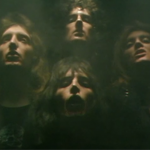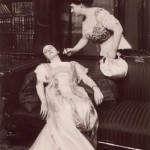Weekly Wrap Volume 84
 The Surprising Truth About the Difference Between Hardwoods and Softwoods
The Surprising Truth About the Difference Between Hardwoods and Softwoods
Generally speaking, wood is often put into one of two categories- hardwood and softwood. But what exactly makes a given piece of wood qualify as either hard or soft and how did those definitions come about? Perhaps the most important and misunderstood aspect of defining wood as either hard or soft is that it has absolutely nothing to do with the individual qualities of the harvested wood itself. The most famous and oft used example of this concept is that of balsa wood which, despite being literally one of the least dense (and hence softest) woods of all, is technically classified as hardwood. Likewise, the wood of the yew tree, which is classified as being a softwood, is a great deal tougher than many hardwoods including several types of oak. So what’s going on here? Well, the basic answer is that… (more)
 The Unorthodox Way Bohemian Rhapsody First Made It to Air
The Unorthodox Way Bohemian Rhapsody First Made It to Air
Clocking in at 5 minutes and 55 seconds long and encompassing elements of hard rock, opera and pop, Bohemian Rhapsody is certainly one of the more eclectic songs to make it into the charts, but it’s by no means the longest. Hey Jude by The Beatles (7:11), I’d Do Anything for Love (But I Won’t Do That) by Meatloaf (7:58) and All Around The World by Oasis (9:38) are all songs that have managed to squeak their way into the charts despite being about twice the length of most other pop songs. That said, the fact that there are so few songs over 5 minutes in length that have gained that much airtime is a testament to how rare of an occurrence that actually is. Taken from the album A Night at the Opera and credited solely to Freddie Mercury, Bohemian Rhapsody is noted as being one of the most lavishly expensive songs ever recorded. In fact, it was reportedly the most expensive single ever at the time. This was, in part, due to the band ultimately using 180 separate overdubs, which was incredibly tricky to do given that they were working with 24-track… (more)
 Why Women Fainted So Much in the 19th Century
Why Women Fainted So Much in the 19th Century
Dropping like flies (or at least as far as many stories indicate), it seems as if well-bred ladies in the 1800s struggled to maintain consciousness when faced with even the slightest emotional or physical shock. Over the years there have been several theories as to why this seemed to happen, from the women’s garb to simply conforming to societal expectations. To begin with, throughout the 19th century (among other times), ladies often wore corsets. Worn around the torso, corsets were made of a durable tightly woven fabric or leather, fashioned with channels running throughout them in which vertical ribs were inserted, called boning because they were often made with whale bone (although ivory and wood were also used). While the purpose of the corset changed over time- sometimes meant to give a flat look, sometimes meant to give extra curves via tightening, it’s the latter fad, particularly in the Victorian era, that many propose was the cause of at… (more)
 The Amazingly Tough Hero Shrew
The Amazingly Tough Hero Shrew
At only a few inches long and with no distinguishing external physical features to speak of, Scutisorex somereni, better known as the Hero or Armoured Shrew, is seemingly an unremarkable creature. That is, until you accidentally step on one. You see, the Hero shrew can comfortably survive being stood on by a typical adult human without any injury. The secret to this remarkably skill lies in the shrew’s skeletal system, or more specifically, its spine. Unlike almost every other mammal on Earth, with one notable exception which we’ll get to in a moment, the Hero shrew’s spine features intricate interlocking vertebrae, a very large number of spinal processes, and is incredibly thick relative to its size (accounting for roughly 4% of its total body weight, or about a 6-8 times higher percentage than mammals of comparable size). As a final insult to other, lesser shrews, the Hero shrew’s spine also contains more than twice as many lumbar vertebrae (10-11 instead of 5) giving the little guy significantly more flexibility than its peers, allowing the Hero shrew to turn around in much tighter quarters than its brethren can. What makes this adaptation even more… (more)
 That Time Bert Trautmann Played in a Professional Soccer Game with a Broken Neck
That Time Bert Trautmann Played in a Professional Soccer Game with a Broken Neck
Bert Trautmann was born October 22, 1923 in Bremen, Germany. Blue-eyed and blond haired, Trautmann was the product of a tumultuous political climate within the post-World War I country. He grew up surrounded by Nazi-ideology, including blaming the Jews for the country’s economic problems and believing certain Germans, such as himself, were members of the “master race.” So it’s not surprising that he joined what would become the “Hitler Youth” when he was ten years old. He later said of this, “At that age you just want adventure. It was just like the boy scouts. It was fun – sport, sport, sport. The idea that we were Nazis at the time is nonsense. The indoctrination came later.” And, indoctrinated he was. “Although you didn’t know it, your mind was influenced by the Nazi propaganda. You listened to the political speeches. I would be lying if I said I wasn’t impressed. People have an affinity towards their own and the Nazi’s were telling us that German people were suffering apparent atrocities in Poland or wherever. We didn’t realise the power of propaganda…” (more)
Bonus Quick Facts:
- About 1.7 million tons of almonds are produced every year world-wide with California producing about 80% of the world’s almonds and near 100% of the U.S.’s commercial supply of almonds. Close to one million bee hives, which is about 50% of the U.S.’s total number of bee hives, are used to pollinate California’s almond groves.
- Eric Marlon Bishop, better known as Jamie Foxx, picked this somewhat androgynous name due to the fact that early in his career he noticed that female comedians often got picked to perform over male comedians at comedy clubs.
- Camels have three eyelids. Two of the eyelids have eye lashes which help protect their eyes from sand. The third is a very thin lid which works as a sort of “windshield wiper” to clean off their eyes. It closes/opens from side to side rather than up and down. It is also thin enough that the Camels can see through it somewhat. So in a sandstorm or otherwise windy day where sand is being stirred up, they can close that lid to protect their eyes from the sand, but still see where they are going.
- There are some words that change their meaning based on whether the first letter is capitalized or not. These words are collectively known as “capitonyms”. These capitonyms are particularly troublesome when they appear at the beginning of a sentence as there is no way, based on the single word alone, to tell which meaning is being referred to. Examples of these include: August vs. august (month vs majestic or venerable); Calorie vs. calorie (1000 calories vs. 1 calorie); Moon vs. moon (the Earth’s natural satellite vs. any natural satellite); Divine vs. divine (related to God vs. to discover by intuition or insight); etc.
- Sword swallowing was first introduced in India in 2000 BC where it was a demonstration of divinity and power. From there, it spread to China and Japan for theatrical performance. Today, in order to become an approved member of the Sword Swallowers Association International (yes there is one), they require you to swallow a blade between 15 and 20 inches in length.
- Earthworms are hermaphrodites. When two worms mate, both worms produce children. The worms mate by getting in more or less a 69 position and exchanging sperm with one another. Much later, a cocoon is then secreted by the clitellum band, which is visible near the front of the worm. This is roughly ring shaped. As it’s sliding out of the secreted ring, the worm deposits its eggs and the other worm’s sperm into the ring. The ring then seals itself once the worm is completely out. Eventually, the baby earthworms emerge, lacking only the ability to breed at this point, but otherwise fully developed and ready to go process some soil and be the staple of a lot of animal’s diets. How long it takes for them to emerge from the cocoon depends completely on the environment. The cocoon can keep for years without hatching if the environment isn’t right. One cocoon will typically produce 1-5 worms.
- The famous recruiting image of Uncle Sam during WWI that depicted a stern Uncle Sam pointing his finger and saying “I want you” was drawn by artist James Montgomery Flagg in 1917. This was based on a famous series of British war recruitment posters featuring Lord Kitchener and is now the standard image used to depict Uncle Sam.
Other Interesting Stuff:
 Why Do Men’s and Women’s Clothes Have the Buttons on the Opposite Sides?
Why Do Men’s and Women’s Clothes Have the Buttons on the Opposite Sides?
As with so many things in history, we can’t know with 100% accuracy why men’s and women’s clothes button up the opposite way. (Even something relatively recent like who invented Buffalo Wings is up for debate despite being invented only about a half century ago.) But there are several theories floating around on the button front, one of which is particularly plausible. The most widely touted theory by far is that the practise of reversing buttons on men’s and women’s clothing stems back to the time of elaborate dress of gentlemen and ladies when upper-class women, particularly during the Victorian era, wore so many layers that it was necessary for them to be dressed by a servant or maid. As such, it became customary to make clothes for women that were slightly easier for other people to button up, specifically right handed people. Men’s clothes were left with the button on the right, as has… (more)
These days, just casually strolling down a grocery aisle, one can find a multitude of gluten-free products. From gluten-free whole grain bread to gluten-free beer to gluten-free Betty Crocker chocolate brownie mix, the market for food items without gluten has exploded over the past decade. But is gluten all that bad for you? Should a normal person avoid gluten in their diet? What’s the deal with the gluten? Gluten (meaning “glue” in Latin) is just a name for a group of proteins most often found in grains like wheat, barley, and rye. The term ‘gluten’ actually refers to two families of proteins: glutenins and gliadins, which exist in the mature seeds of these grains. Gluten is sticky, stretchable, elastic, and can act as a thickening agent in products besides food, like toothpaste and hair gel. While our ancestors were hunter/gatherers, about 10,000-12,000 years ago (probably beginning in Western Asia) we began transitioning to a more grain-based diet via cultivation and advancements in agriculture. As is the case with non-human milk… (more)
 The Fascinating Origin of Arlington National Cemetery
The Fascinating Origin of Arlington National Cemetery
The final resting place of presidents, bandleaders, war heroes, astronauts, inventors, civil rights leaders, Pulitzer Prize winners, boxers, Supreme Court justices and sports stars, Arlington National Cemetery stands as a memorial to the melting pot of the United States. With connections to some of our nation’s most influential people and pivotal events, its history is as interesting as its denizens. Arlington is situated on 624 acres overlooking the Potomac River directly across from Washington, D. C. Although today it is surrounded by the nation’s capital, at one time, Arlington was a bucolic estate with a neoclassical mansion, Arlington House. Still presiding over the grounds today, the mansion was built by George Washington’s (yes, that Washington) grandson and marks the beginning of the cemetery’s history. Before she married George, Martha was married to Daniel Parke Custis. After he died and she wed the “Father” of our Country, George adopted her two surviving children. The oldest, John Parke Custis (JPC), died in 1781 while serving with the Revolutionary Army. He left behind four children, the youngest of which, George Washington Parke Custis (GWPC), was born only shortly before his father’s death. GWPC and one sister… (more)
 Why Do They Use 21 Guns in the 21 Gun Salute?
Why Do They Use 21 Guns in the 21 Gun Salute?
The 21-gun salute that we know today has its roots in the ancient tradition of warriors demonstrating their peaceful intentions by resting the point of their weapons on the ground. The notion of making a soldier’s weapons useless to show that he came in peace continued even as warfare changed over the centuries. Gunpowder and cannons became commonplace among militaries and private forces, both on land and at sea around the 14th century. In order for a ship entering a foreign port to show those on shore that they came in peace, the captain would have his crew fire the guns. This rendered the weapons inoperable for a period of time, with early guns only being capable of firing a single shot before crews needed to reload them. Traditionally when a British ship entered into a foreign port, it would fire its guns seven times. The reason for the seven shots is widely debated to this day. One theory states that the majority of the British ships at this point only carried seven guns and so firing seven shots became the standard to signal those on shore that the ship was now unarmed. Ships carried enough gunpowder… (more)
 Who is Buried in the Tomb of the Unknown Soldier?
Who is Buried in the Tomb of the Unknown Soldier?
It’s Armistice Day, November 11th, in the nation’s capital. It is a brisk day at Arlington National Cemetery. Dignitaries stand silently on the third anniversary of the ending of World War I, watching as a single white casket is lowered into a marbled tomb. In attendance is President Calvin Coolidge, former President Woodrow Wilson, Supreme Court Justice (as well as former President) William Howard Taft, Chief Plenty Coups, and hundreds of dedicated United States servicemen. As the casket settles on its final resting place in the tomb, upon a thin layer of French soil, three salvos are fired. A bugler plays taps and, with the final note, comes a 21 gun salute. The smoke clears and eyes dry as the Unknown Soldier from World War I is laid to rest; the first unknown soldier to be officially honored in this manner in American history. The United States’ allies in World War I, France and Britain, were the firs… (more)
 Origin of the Military Song “Taps”
Origin of the Military Song “Taps”
Since 1862, “Taps” has played at military funerals to honor the sacrifice of fallen service members. Originally, however, it was intended to send soldiers off to a less permanent sleep. During the Civil War, Union buglers signaled “lights out” to their comrades with a tune called “Extinguish Lights,” which was actually borrowed from an 1809 French bugle call (which also happened to be Napoleon’s favorite). Finding the song too formal, in July 1862 Union Army General Daniel Butterfield (Third Brigade, First Division, Fifth Army Corps, Army of the Potomac) decided to find a more appealing tune to end the day. During a respite while his brigade was camping at Harrison’s Landing after the Seven Days Battles of the Peninsular Campaign, Butterfield worked on the new tune. In collaboration with his bugler, Oliver Wilcox Norton, the two rearranged an earlier bugle call, “Scott Tattoo,” into the 24 notes of “Taps.” According to Norton… (more)
This Week’s Podcast Episodes:
| Share the Knowledge! |
|





